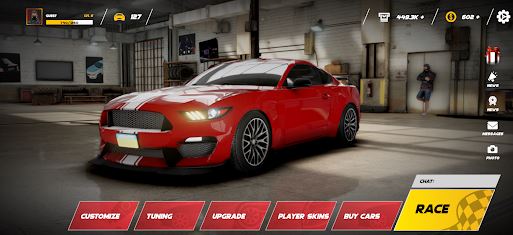Drifting is more than just a motorsport—it’s a lifestyle, an art form, and a community built on passion, precision, and adrenaline. For those who live and breathe the world of sideways driving, drifting is not just a hobby; it’s a way of life. “Drift for Life” embodies the dedication, creativity, and camaraderie that define this thrilling motorsport. In this article, we’ll dive into the world of drifting, exploring its origins, techniques, culture, and why it continues to captivate enthusiasts around the globe.
What is Drifting?
Drifting is a driving technique where the driver intentionally oversteers, causing the rear wheels to lose traction while maintaining control through a corner. The result is a spectacular display of smoke, screeching tires, and perfectly executed slides. Unlike traditional racing, where the goal is to finish first, drifting is about style, angle, and control. It’s a sport that combines skill, precision, and showmanship.
The Origins of Drifting
Drifting originated in Japan in the 1970s and 1980s, primarily on the winding mountain roads known as “touge.” Japanese drivers, inspired by the techniques of rally racing, began experimenting with controlled slides to navigate tight corners at high speeds. This underground scene quickly gained popularity, and drifting evolved into a legitimate motorsport.
The sport gained international recognition in the early 2000s, thanks in part to the Initial D manga and anime series, as well as the Fast and Furious movie franchise. Today, drifting is a global phenomenon, with professional competitions, dedicated fans, and a thriving community.
The Art of Drifting
Drifting is often described as an art form, and for good reason. It requires a unique blend of technical skill, creativity, and flair. Here are some key elements that make drifting so captivating:
- Precision and Control:
- Drifting demands exceptional car control. Drivers must master throttle modulation, steering input, and weight transfer to maintain the perfect slide.
- Style and Angle:
- The goal is not just to slide but to do it with style. The angle of the car, the amount of smoke, and the smoothness of the transition all contribute to the overall performance.
- Car Setup:
- Drift cars are specially modified to handle the stresses of sliding. Key modifications include reinforced suspension, limited-slip differentials, and high-performance tires.
- Creativity:
- Every drift run is an opportunity to express creativity. Drivers can experiment with different lines, techniques, and combinations to create a unique performance.
The Culture of Drifting
Drifting is more than just a sport—it’s a culture that brings people together. Here’s what makes the drifting community so special:
- Passion and Dedication:
- Drifters are deeply passionate about their craft. From building and tuning cars to practicing for hours on end, the dedication is unmatched.
- Community and Camaraderie:
- The drifting community is known for its inclusivity and support. Whether you’re a seasoned pro or a beginner, there’s always someone willing to share knowledge and help you improve.
- Events and Competitions:
- Drift events, from grassroots meet-ups to professional competitions like Formula Drift, are a celebration of the sport. These events are a chance for drivers to showcase their skills and for fans to experience the excitement firsthand.
- Car Culture:
- Drifting is deeply rooted in car culture. From JDM (Japanese Domestic Market) icons like the Nissan Silvia and Toyota AE86 to custom-built machines, the cars are as much a part of the culture as the driving itself.
Why Drift for Life?
For many, drifting is more than just a hobby—it’s a way of life. Here’s why so many people are drawn to the “Drift for Life” mentality:
- The Thrill of Adrenaline:
- There’s nothing quite like the rush of executing a perfect drift. The combination of speed, control, and danger is intoxicating.
- Self-Expression:
- Drifting allows drivers to express themselves through their driving style, car modifications, and creativity.
- Continuous Learning:
- Drifting is a sport where there’s always room for improvement. Every run is an opportunity to learn and refine your skills.
- Building Connections:
- The drifting community is a tight-knit group of like-minded individuals who share a common passion. Lifelong friendships are often forged on the track.
Getting Started with Drifting
If you’re inspired to embrace the “Drift for Life” mentality, here’s how you can get started:
- Choose the Right Car:
- Look for a rear-wheel-drive car with good aftermarket support. Popular choices include the Nissan 240SX, Toyota Supra, and Mazda MX-5.
- Learn the Basics:
- Start by practicing in a safe, controlled environment. Learn the fundamentals of car control, such as throttle modulation and counter-steering.
- Join the Community:
- Attend local drift events, join online forums, and connect with experienced drifters. The community is your best resource for learning and growth.
- Invest in Safety:
- Safety should always come first. Equip your car with a roll cage, harness, and fire extinguisher, and always wear a helmet.
- Practice, Practice, Practice:
- Drifting is a skill that takes time to master. Be patient, stay persistent, and enjoy the journey.
Conclusion
“Drift for Life” is more than just a slogan—it’s a mindset that embodies the passion, creativity, and camaraderie of the drifting world. Whether you’re a seasoned drifter or a curious beginner, the world of drifting offers endless opportunities for excitement, self-expression, and connection. So, buckle up, embrace the sideways lifestyle, and let the tires smoke—because once you experience the thrill of drifting, you’ll be hooked for life.




